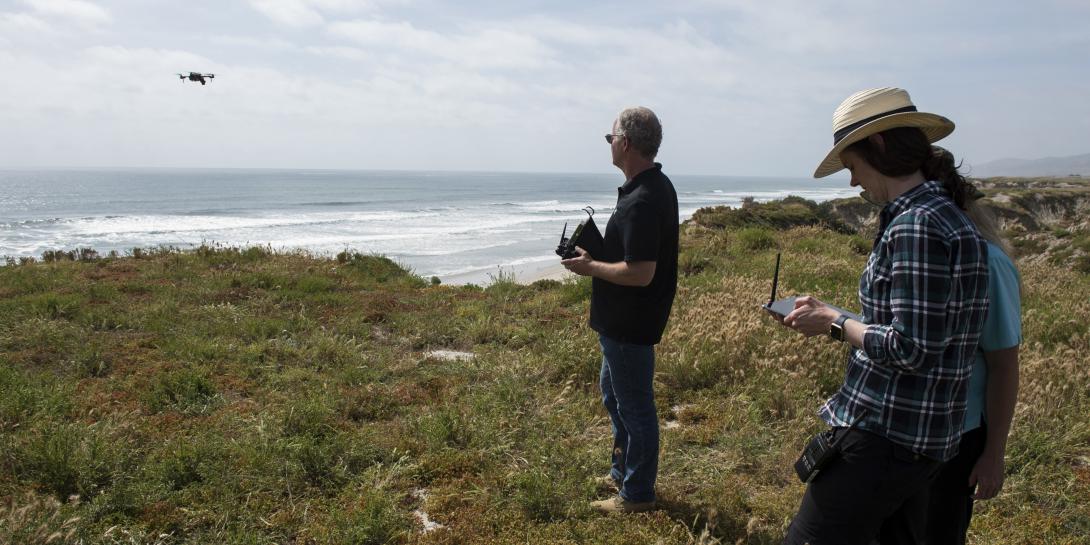Unmanned Copter Cops Hidden Mines
The Naval Surface Warfare Center (NSWC) and industry have combined a one-pound quadcopter and Android technology to create an innovative way to detect buried and submerged mines remotely. The Mine Warfare Rapid Assessment Capability (MIW RAC) system features an ultrasensitive magnetometer sensor system to help sailors and Marines approaching a beachfront rapidly locate mines or other hazards prior to landing.
Dr. Rosemarie Oelrich and Cory Stephanson demonstrated the technology’s capability at Marine Corps Base Camp Pendleton in California. Using an Android tablet, they could see search data downloaded from a drone. The device's screen glowed as a green fluorescent map splashed with red clusters of varying sizes and shapes appeared.
"See that large cluster?" asked Stephanson. "That's the dummy mine we buried. The smaller blotches near it are construction rebar we found nearby. The drone detected and localized these items quickly and accurately, which would be extremely valuable in a real combat scenario."
Oelrich is an NSWC scientist in the Carderock Combatant Craft Division. Stephanson is president and CEO of Broadband Discovery Systems (BDS); the company develops intelligent physical security, forensics and access control solutions.
Development of the MIW RAC originated in 2015. The Navy Expeditionary Combat Command (NECC) sent a request for a portable system that could detect potential hazards in surf zones; be easy for warfighters to use; and fit diverse platforms to ONR's TechSolutions program. The ONR rapid-response science and technology program develops prototype technologies—usually within 12 to 18 months—to address problems sailors and Marines identify.
With TechSolutions guidance, NECC partnered with NSWC Carderock, Combat Direction Systems Activity Dam Neck and industry to develop the components of MIW RAC.
While the quadcopter and tablet device are available commercially, the heart of MIW RAC is its proprietary magnetometer sensor suite with an extensive detection range. The system uses complex algorithms to differentiate between various types of objects.
The system could be issued throughout the fleet as early as next year.





Comments